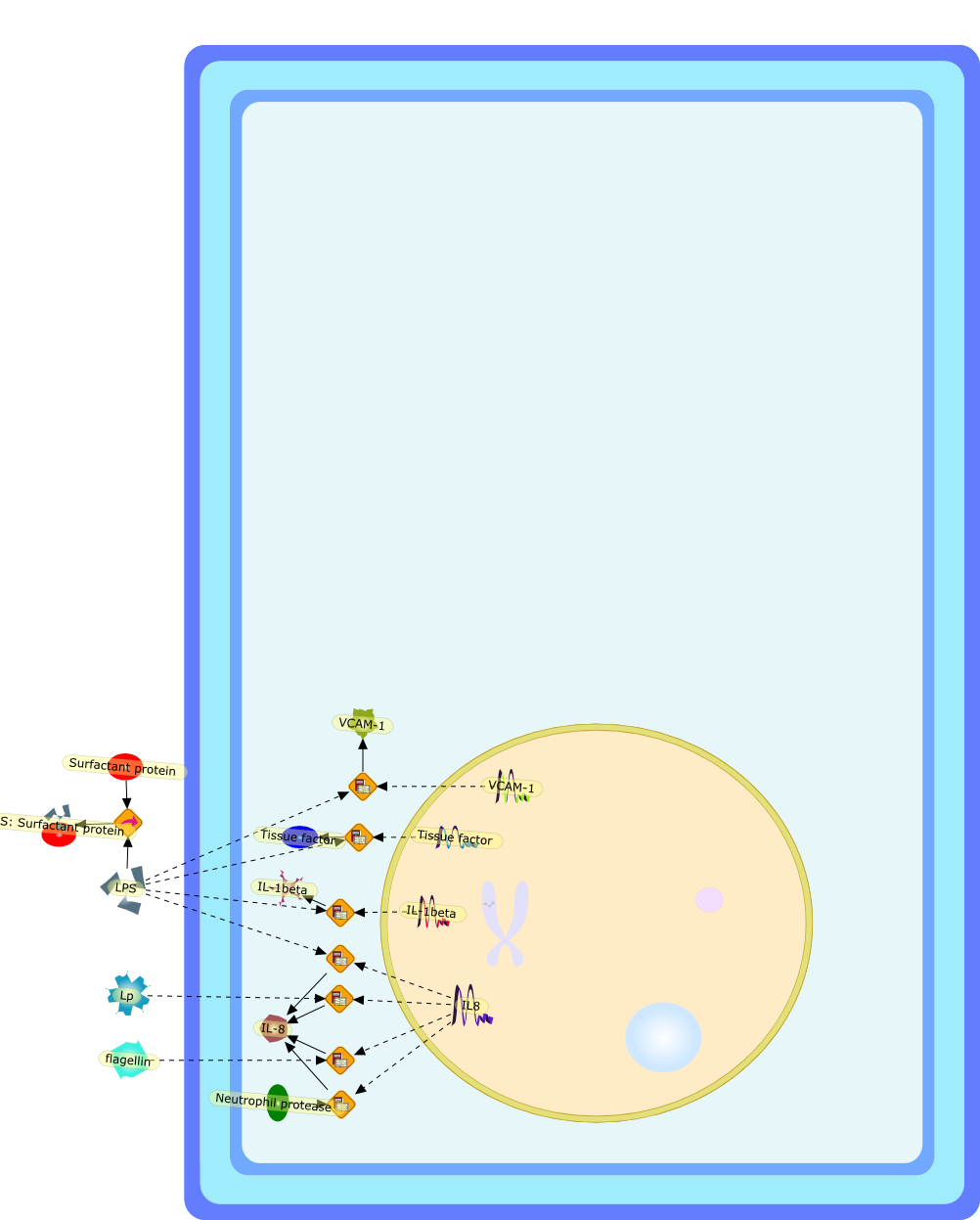| Original Literature | Model OverView |
|---|---|
|
Publication
Title
Toll-like receptor (TLR)-based networks regulate neutrophilic inflammation inrespiratory disease.
Affiliation
Academic Unit of Respiratory Medicine, Section of Infection, Inflammation andImmunity, School of Medicine and Biomedical Sciences, Royal HallamshireHospital, University of Sheffield, Sheffield S10 2JF, U.K.i.sabroe@sheffield.ac.uk
Abstract
The neutrophil is a crucial early defence against microbial infection, butneutrophilic inflammation can result in devastating acute and chronicinflammatory diseases. In the lungs, the neutrophil is a principal part of thepathology of the acute respiratory distress syndrome, and its activation mayalso be of substantial importance in chronic obstructive pulmonary disease andsome forms of asthma. Induction of neutrophil recruitment in response tomicrobial attack requires activation of TLR (Toll-like receptor)-basedsignalling pathways and the concerted actions of multiple cell types, includingsentinel cells such as monocytes and macrophages acting together with tissuecell types such as the epithelium or smooth-muscle cell. The present reviewdescribes some of these networks and the resulting potential for their targetingin respiratory disease.
PMID
18031251
|




